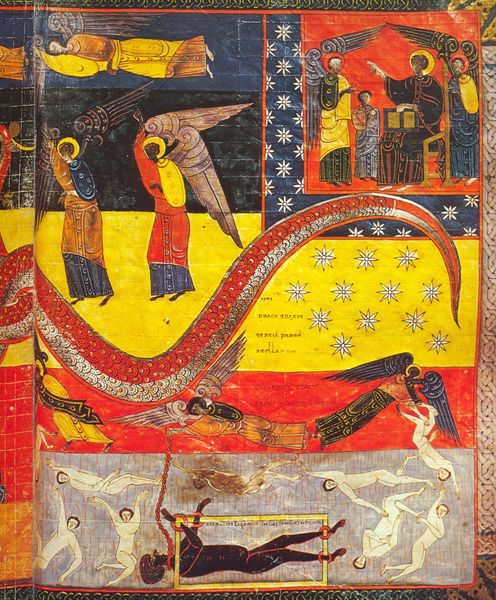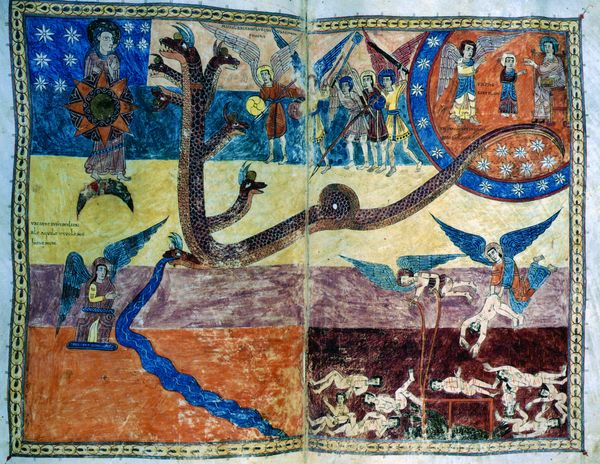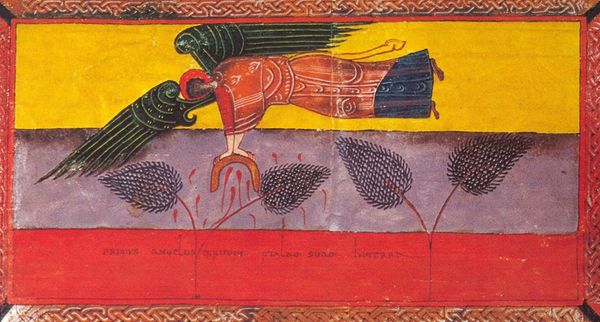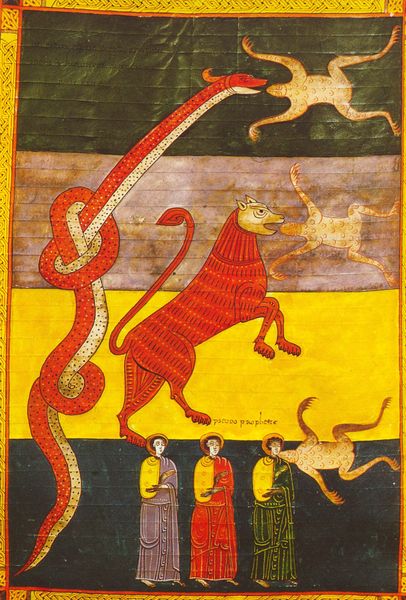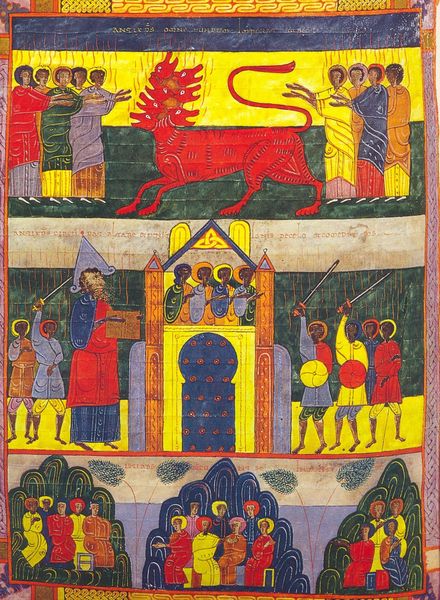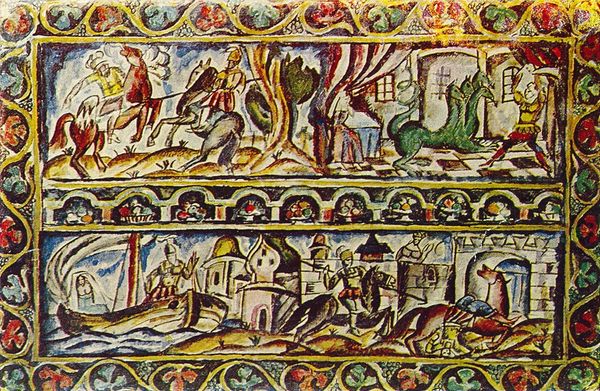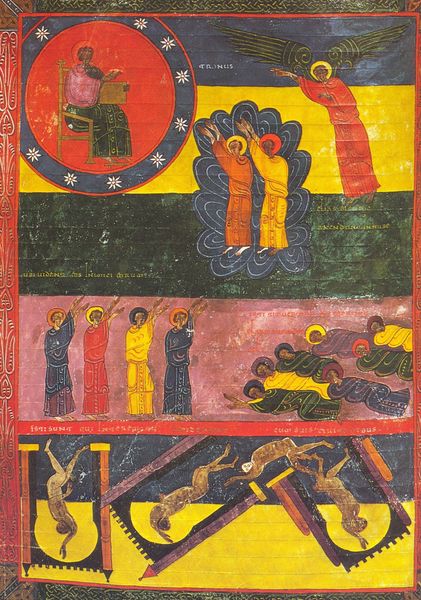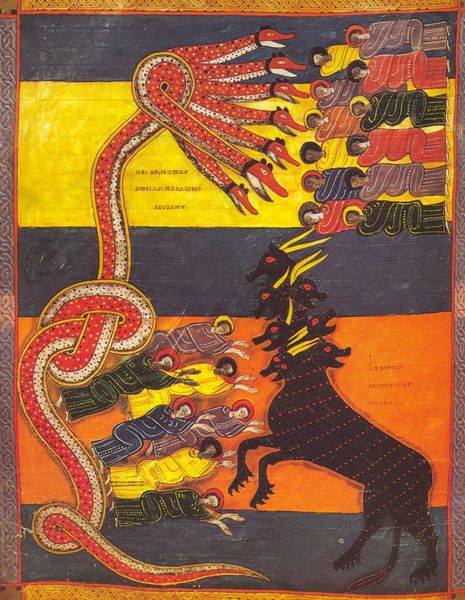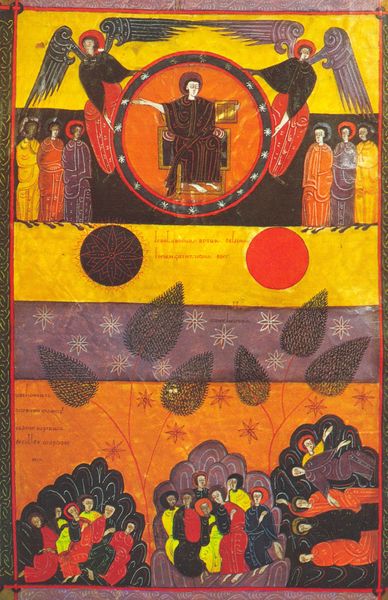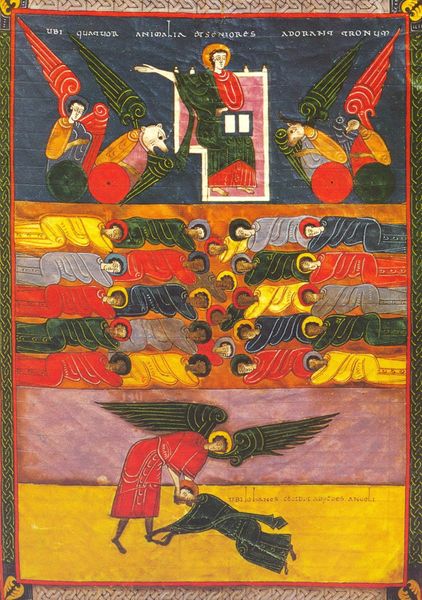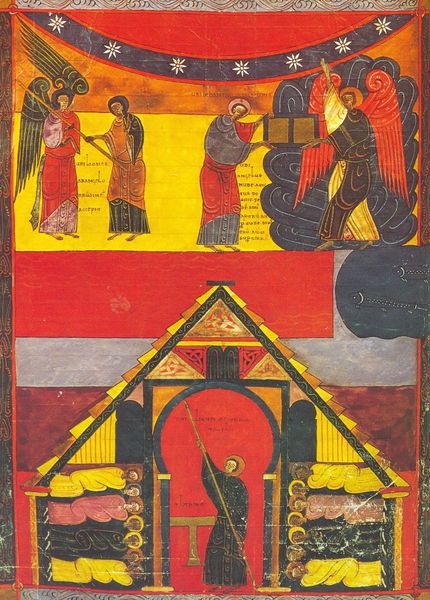
ink
#
byzantine-art
#
medieval
#
allegory
#
narrative-art
#
figuration
#
text
#
ink
#
miniature
Copyright: Public domain
Editor: This striking ink drawing, "La Femme et le Dragon" after Facundus, feels like it's ripped straight from a nightmare! The colours are intense, and the multi-headed dragon is quite unnerving. What do you see in this piece, particularly considering its historical context? Curator: The image certainly holds a powerful narrative charge. Viewing it through a historical lens, this miniature likely served a specific function within its community. It visually articulates Chapter 12 of the Book of Revelation, a moment pregnant with apocalyptic symbolism and anxiety. Note the careful rendering and vibrant palette, which aims to capture the divine and infernal realms. Given that art was largely commissioned by religious and political elites at the time, how do you think the imagery in it would be viewed by the common person? Editor: I imagine it was intended to be didactic – a visual aid to reinforce religious teachings and the power of the church. The dragon is such a strong symbol of evil, the woman representing purity under threat... But isn't there also something political here? Curator: Absolutely. Allegories like this were never purely theological. Who benefits from instilling this narrative into the public consciousness? This image of a woman threatened by a dragon has resonances that go far beyond religious instruction, acting as powerful statements during the Byzantine period of both royal authority and cultural supremacy, not to mention its relevance throughout Western Civilization's historical imagination.. Think about power structures, cultural anxieties, the visual language used to perpetuate specific beliefs. Editor: So it's about control, both spiritual and societal, made visible. I never would have picked up on that viewing it solely on aesthetics! Curator: Exactly! Recognizing those layers opens up a richer understanding of art's role. This helps me think about whose perspectives are valued, and how that impacts what is preserved and interpreted. Editor: That is helpful. It shifts the whole view of art from mere skill and craft into historical agency. Curator: Yes! Art isn't produced in a vacuum; it's an active participant in a dialogue between those who produced it and a historical need.
Comments
No comments
Be the first to comment and join the conversation on the ultimate creative platform.
